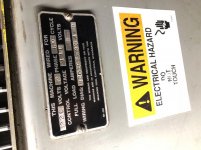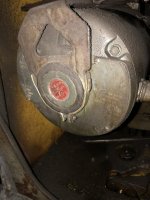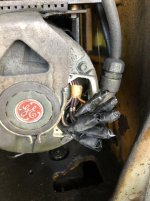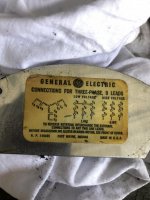I'm wondering if there is a better place to post this but I'm starting here because this is a surface grinder wiring question.
The grinder was labeled 220 but the shop the grinder came out of was wired 480, and it would not run without a 480 transformer. This looks to be a dual voltage machine and should work in either 480 or 220 without replacing parts (I could be wrong about this), you just need to wire the mortors correctly.
Inside the cabinet, I see a dual voltage step-down transformer (480 or 240 input to 240 or 120) and some kind of motor controller coil? The transformer is single phase so I think it's for the motor control. The wiring diagram shows the machine is a total of 2HP with the spindle, pump and hydrolics running.

If I understand that chart, 3 phase 240 will be 3hp max, and 120 (if it got it's volts from the transformer) would be 2HP.

I'll have a look at the motor wiring when I get the machine on Friday.
The grinder was labeled 220 but the shop the grinder came out of was wired 480, and it would not run without a 480 transformer. This looks to be a dual voltage machine and should work in either 480 or 220 without replacing parts (I could be wrong about this), you just need to wire the mortors correctly.
Inside the cabinet, I see a dual voltage step-down transformer (480 or 240 input to 240 or 120) and some kind of motor controller coil? The transformer is single phase so I think it's for the motor control. The wiring diagram shows the machine is a total of 2HP with the spindle, pump and hydrolics running.

If I understand that chart, 3 phase 240 will be 3hp max, and 120 (if it got it's volts from the transformer) would be 2HP.

I'll have a look at the motor wiring when I get the machine on Friday.








